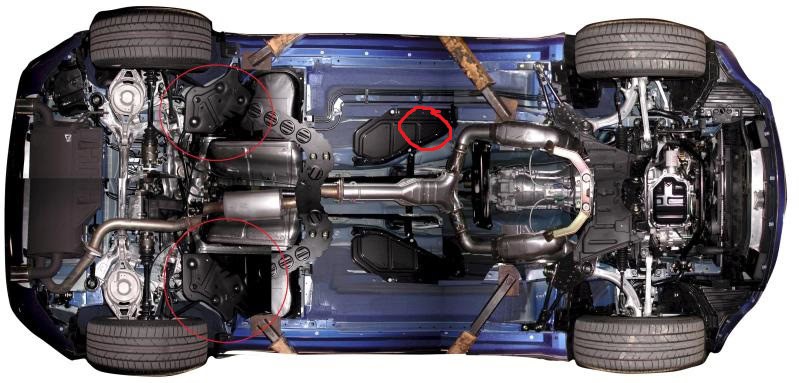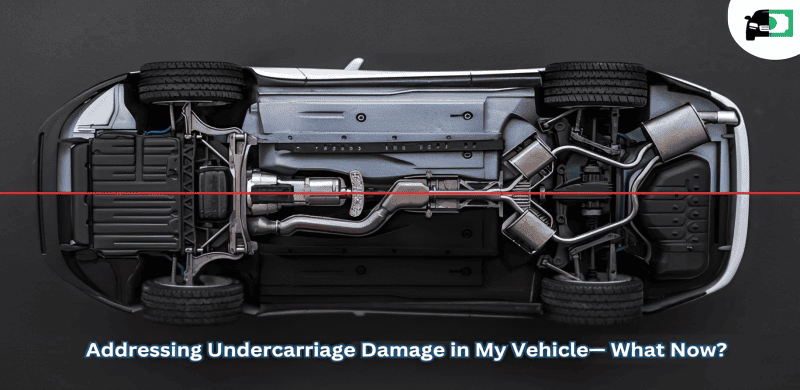Table of Contents
When you drive a car, you encounter various dangers on the road. These can include slippery roads, sharp turns, holes in the pavement, and even other drivers. These hazards can lead to harm to your vehicle. However, many people only notice the external damage, such as dents and scratches, because it’s visible.
There are other problems, like damage underneath your car, that are not as easy to spot. For example, if you hit a pothole or run over debris on the road, it can cause damage to the bottom of your car, which may not be immediately obvious.
Because this type of damage isn’t visible right away, you need to pay attention to other signs to know if there’s a problem with your car.
What Does An Undercarriage Do?
The undercarriage of a car serves as a structural support framework located beneath the vehicle’s cabin, comprising the chassis. It plays a vital role in providing a stable foundation for the entire vehicle and facilitates the connection of various critical components, such as:
Support and Chassis: The undercarriage provides a solid foundation for the entire vehicle, serving as the chassis or frame to which other components are attached.
Axle Support: It houses the axles, which are essential for transferring power from the engine to the wheels.
Wheel Mounting: The undercarriage is where the wheels are attached, allowing the vehicle to roll and maneuver.
Brake Line Routing: It accommodates and secures the brake lines, ensuring efficient braking operations.
Exhaust System Attachment: The undercarriage supports the exhaust system, which channels and expels exhaust gases from the engine.
Suspension Mounting: It plays a crucial role in connecting and supporting the suspension components, which contribute to a smoother and more stable ride.
While the undercarriage is designed to be robust and resilient, it is not impervious to harm. Below, we will discuss potential scenarios in which this sturdy underbody might sustain damage and outline the steps to take if such damage occurs.
What Can Damage Your Undercarriage?
- Potholes
- Salt
- Mud
- Debris on the road

Potholes
One common thing that can hurt your car’s bottom part, called the undercarriage, is potholes. These are holes in the road that can make your car bump and get damaged. Also, stuff like debris (pieces of things) on the road can be a problem for the undercarriage. For example, if your car is not built for driving on gravel roads, taking it on one can cause damage too.
Road Salt
In places where it snows a lot, roads are often spread with salt to stop ice from forming. But this salt can be bad for your undercarriage over time. It can make the metal parts get weak and damaged if you don’t take care of it.
Mud
To stop your car from getting hurt by road salt, you can use a special covering called a sealant. You can also protect your car by putting wax on it. Wax can keep your car safe from damage caused by things like corrosion. This can help your car last longer.
Debris on the Road
Another thing to watch out for is debris on the road. Debris is like bits and pieces of stuff that might have fallen on the road, and if your car runs over it, it can damage the undercarriage. So, be careful when you see things in the road that your car might bump into.
Cost to repair Undercarriage damage?
Fixing undercarriage damage can be possible in many cases. However, when the damage is severe, you might need to replace the undercarriage.
Small problems like scratches and dents are examples of issues that can be repaired. But if the damage is more extensive or deeper, it’s likely that a replacement is necessary.
How Much Does It Cost to Repair Undercarriage Damage?
The cost of repairing undercarriage damage can vary widely. For instance, if the undercarriage has only minor dents and scratches, your repair bill will probably range from $300 to $3,000.
However, if the repair involves more extensive damage to not only the underbody but also other parts like the suspension, it could cost you well over $3,000.
Here’s a breakdown of estimated repair costs for various types of undercarriage and related damage:
- Repairing rust: $200 – $1,500
- Fixing frame rust: $2,200 – $4,000
- Repairing the exhaust pipe: $100 – $300
- Transmission repair: $50 – $400
- Suspension repair: $200 – $2,000
yourcarintocash Buys Cars With any type of Damage
If you have a car with undercarriage damage and don’t want to deal with the cost of repairs, yourcarintocash is here to help. We’re ready to take your damaged vehicle off your hands at a fair price. We purchase cars in all conditions, including models like yours that have significant undercarriage damage.
We take into account a range of factors beyond just your car’s condition, such as its year, make, model, trim, special features, and current demand in the market.
Here’s how you can sell your car to yourcarintocash today:
- Use our estimator to determine your car’s value in just 60 seconds.
- Accept our offer and schedule a free tow pick-up anywhere in US.
- Hand over your keys and receive instant cash.
By working with us, you can have your car removed from your place within 24 to 48 hours.
Give our estimation tool a try today to discover how much your car is worth!


